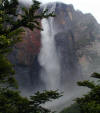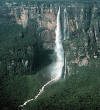       



 |
Glossary
- Adiabatic- When
something occurs without heating up or cooling off.
- Alps- A mountain
Range in Eruope.
- Stretches from
Slovenia and Austria in the East through Italy, Germany France,
Liechtenstein and Switzerland in the West.





- Angel Falls- At 979m
(3,212ft), it is the world's largest free-falling waterfall. It has
two drops, the largest one is 807m(2,648ft). It is located in Canaima National Park on the Auyan Tepui River in Venezuela.
It is so high that during hot days the water can evaporate before it
reaches the ground.



- Cascade Mountains- A 400 mile
stretch of mountains in California.





|
Hardness |
Mineral |
Absolute
Hardness |
Example |
|
1 |
Talc |
1 |
Fingernail
|
|
2 |
Gypsum
|
2 |
Gold/Silver |
|
3 |
Calcite |
9 |
|
|
4 |
Fluorite |
21 |
Platinum |
|
5 |
Apatite |
48 |
|
|
6 |
Orthoclase |
72 |
Knife Blade |
|
7 |
Quartz |
100 |
Glass |
|
8 |
Topaz |
200 |
Steel File |
|
9 |
Corundum |
400 |
|
|
10 |
Diamond |
1500 |
|
|